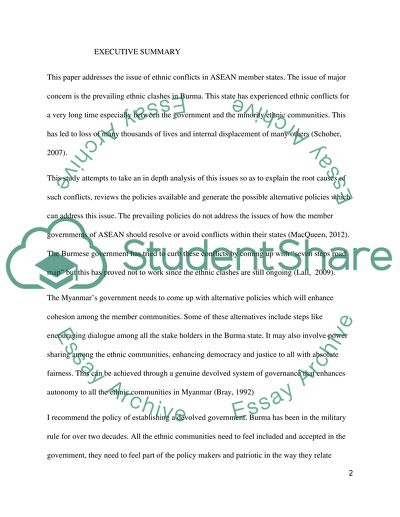Cite this document
(“Given the recent ethnic violence in Myanmar, how can ASEAN enhance its Essay”, n.d.)
Given the recent ethnic violence in Myanmar, how can ASEAN enhance its Essay. Retrieved from https://studentshare.org/history/1621456-given-the-recent-ethnic-violence-in-myanmar-how-can-asean-enhance-its-cooperation-with-a-view-to-avoiding-or-mediating-ethnic-tensions-in-its-member-states-in-the-future
Given the recent ethnic violence in Myanmar, how can ASEAN enhance its Essay. Retrieved from https://studentshare.org/history/1621456-given-the-recent-ethnic-violence-in-myanmar-how-can-asean-enhance-its-cooperation-with-a-view-to-avoiding-or-mediating-ethnic-tensions-in-its-member-states-in-the-future
(Given the Recent Ethnic Violence in Myanmar, How Can ASEAN Enhance Its Essay)
Given the Recent Ethnic Violence in Myanmar, How Can ASEAN Enhance Its Essay. https://studentshare.org/history/1621456-given-the-recent-ethnic-violence-in-myanmar-how-can-asean-enhance-its-cooperation-with-a-view-to-avoiding-or-mediating-ethnic-tensions-in-its-member-states-in-the-future.
Given the Recent Ethnic Violence in Myanmar, How Can ASEAN Enhance Its Essay. https://studentshare.org/history/1621456-given-the-recent-ethnic-violence-in-myanmar-how-can-asean-enhance-its-cooperation-with-a-view-to-avoiding-or-mediating-ethnic-tensions-in-its-member-states-in-the-future.
“Given the Recent Ethnic Violence in Myanmar, How Can ASEAN Enhance Its Essay”, n.d. https://studentshare.org/history/1621456-given-the-recent-ethnic-violence-in-myanmar-how-can-asean-enhance-its-cooperation-with-a-view-to-avoiding-or-mediating-ethnic-tensions-in-its-member-states-in-the-future.


